Odani Castle (1)
-History of three generation of Azai clan-
Overview
Name: Odani Castle (Odani-jo)
Alias:
Place: Kohoku-cho Nagahama city, Shiga
Location: 35.45993784080076, 136.2752438191
Type: Mountain Castle
Built: Beginning of 16th century, expanded at mid of 16th century
Remaining remnants: Stone walls, clay walls and dry moats
Title: 100 famous Japanese castles
Odani castle (小谷城) is located on one ridge of Odani-yama mountain in Kohokucho town, an edge of mountains continues from Mt. Ibukiyama. Odani castle is a huge castle, of which at least main areas exceed 800 meter long, and if include hillside area and surrounding forts at connecting ridges total area reached 1 kilometer square.
Due to its size and height (over 200 meter from hillside), Odani castle is regarded one of the five largest medieval mountain castles, along with Nanao castle (Ishikawa prefecture), Kasugayama Castle (Niigata prefecture), Kannonji Castle (Shiga prefecture) and Gassan Toda castle (Shimane prefecture). Odani castle was built and had been used a residence of Azai clan (also pronounced as Asai clan), and shared its fortune with the clan for half century.
Azai clan was originally a small local lord of northern part of Omi province (Shiga prefecture). In Muromachi era, the governor of Omi province was Kyogoku clan, one of a traditional clan from Doyo Sasaki (1296-1373), a vassal of Takauji Ashikaga (1305-1358). Kyogoku clan was regarded as four important houses of Muromachi Shogunate and served as governor of many provinces.
But Kyogoku clan was too committed to political conflict of Muromachi Shogunate, and left their territory to deputy governors. Under such circumstance, the authority of Kyogoku clan was weakened and local lords started to seize the power. In southern half of Omi province, Rokkaku clan deprived authority of Kyogoku clan, and in Izumo province (Shimane prefecture) Tsunehisa Amago (1458-1541) captured the province and Gassan Toda castle.
Same as above provinces, in the northern half of Omi province, originally Asami clan grew their power under Kyogoku clan. But opposing local lords gathered and placed Sukemasa Azai (1491-1542) as their leader, and expelled Asami clan around 1520. At first Sukemasa was a nominal leader of ally, but gradually grew his power and finally acted as a deputy governor under Kyogoku clan. From this point, history of Azai clan as a warlord started. At the same time, Azai clan built Odani castle as their residence.
But the basis of Azai clan was still weak. In 1525, Azai clan was attacked by Rokkaku clan and non-obedient local lords and got into a scrape. Sukemasa asked assistance to Asakura clan, a warlord at Echizen country (Fukui prefecture), and Asakura clan sent their excellent general Norikage Asakura (1477-1555). Norikage stationed at the entrance of Odani castle and built Kingo (alias of Norikage) area, then protected Azai clan from Rokkaku clan. Due to this support Azai clan survived the crisis, but at the same time became subordinate of Asakura clan.
Further, former governor Kyogoku clan still stayed at Joheiji castle at the south of Ibuki Mountain, and continued to their attempt to recover their authority at current Maibara area. Resistance of Kyotoku clan continued over 30 years, and finally Kyogoku clan yield to Azai clan at the time of third leader Nagamasa Azai (1545-1573).
Second leader Hisamasa Azai (1526-1573) was said to be not good at military affairs. During his period, in 1558, Azai clan was suppressed by Rokkaku clan again, then Hisamasa was forced to follow Rokkaku clan. Some part of territory was deprived by Rokkaku clan, and Hisamasa named his son as Katamasa, using one letter of Yoshikata Rokkaku (1521-1598), the leader of Rokkaku clan at that time. Yoshikata also let Katamasa marry with Rokkaku related female.
Finally Hisamasa was forced to retire by local lords who were dissatisfied with his passive attitude to Rokkaku clan in 1559, and Katamasa succeeded the leader position. On the other hand, it is also said that Hisamasa had good skill of administration, and well managed people in their territory.
Furious about this situation, Yoshikata Rokkaku attacked the border of Azai clan with 25,000 solders in 1560. In response to this, young Katamasa with only 10,000 troops made sudden attack to Rokkaku army at the place of Norada, in the south part of current Hikone city. Although the number of soldiers was far smaller than Rokkaku army, Azai army had high moral and broke Rokkaku army.
Based on this victory, Azai clan left Rokkaku clan and became independent, then Katamasa renamed to Nagamasa. Nagamasa recaptured territories deprived by Rokkaku clan, and now started to expand to Rokkaku territory or Mino province (Gifu prefecture). Azai clan became its peak period under Nagamasa, and he also expanded Odani castle as a residence of strong warlord.
Main areas of the castle spread along the ridge of Odaniyama mountain over 800 meter. At the center of main areas there exist a huge dry moat of 20 meter width called as “Ohorikiri”, and this moat divides the castle into two parts. The inner areas after large dry moat consist of Sannoh-maru (the highest point), Komaru, Kyogoku-maru and Nakano-maru were originally built areas and remains old shape of castle consist of small terraces. Important person who lost power such as Kyogoku clan or Hisamasa lived this inner area.
Contrary to this, front areas before large dry moat are newly built area and had newer shape and facilities. Just before the large dry moat there existed central area on the higher place, and before that there was a large place named Ohiroma (large hall), where the palace of Azai clan located. At the entrance into Ohiroma there was a Kurogane-mon gate (iron gate), a magnificent turret gate guarded by large stone walls. Before the Ohiroma, there were several areas such as Sakurano-baba, Ochaya or Bansho. Most of walls of main areas are thought to be covered by stone walls.
Because the peak of Odaniyama mountain connects to backside of the castle is higher than the main areas of the castle, Odani castle securely guarded against backward. Top of Odaniyama mountain was guarded by fort of Odake (Ozuku), and a saddle point connecting to hilltop and backside mountains were protected by Gessho-maru, a space consist of sharp moats and clay walls.
The valley called as Shimizudani between Odani-yama and The ridge of Odani castle was used as a houses of retainers and castle town, and there were vertical moats and fences on the north slope facing this valley, to protect side attack from the valley. On the opposite slope there was a terrace named Akao yashiki, a place where Akao clan, a vassal of Azai clan had a residence.
Continue to Part 2
Type: Mountain Castle
Built: Beginning of 16th century, expanded at mid of 16th century
Remaining remnants: Stone walls, clay walls and dry moats
Title: 100 famous Japanese castles
Brief History
Due to its size and height (over 200 meter from hillside), Odani castle is regarded one of the five largest medieval mountain castles, along with Nanao castle (Ishikawa prefecture), Kasugayama Castle (Niigata prefecture), Kannonji Castle (Shiga prefecture) and Gassan Toda castle (Shimane prefecture). Odani castle was built and had been used a residence of Azai clan (also pronounced as Asai clan), and shared its fortune with the clan for half century.
Northern Omi country before Azai clan
Azai clan was originally a small local lord of northern part of Omi province (Shiga prefecture). In Muromachi era, the governor of Omi province was Kyogoku clan, one of a traditional clan from Doyo Sasaki (1296-1373), a vassal of Takauji Ashikaga (1305-1358). Kyogoku clan was regarded as four important houses of Muromachi Shogunate and served as governor of many provinces.
But Kyogoku clan was too committed to political conflict of Muromachi Shogunate, and left their territory to deputy governors. Under such circumstance, the authority of Kyogoku clan was weakened and local lords started to seize the power. In southern half of Omi province, Rokkaku clan deprived authority of Kyogoku clan, and in Izumo province (Shimane prefecture) Tsunehisa Amago (1458-1541) captured the province and Gassan Toda castle.
Start up by Sukemasa Azai
Same as above provinces, in the northern half of Omi province, originally Asami clan grew their power under Kyogoku clan. But opposing local lords gathered and placed Sukemasa Azai (1491-1542) as their leader, and expelled Asami clan around 1520. At first Sukemasa was a nominal leader of ally, but gradually grew his power and finally acted as a deputy governor under Kyogoku clan. From this point, history of Azai clan as a warlord started. At the same time, Azai clan built Odani castle as their residence.
But the basis of Azai clan was still weak. In 1525, Azai clan was attacked by Rokkaku clan and non-obedient local lords and got into a scrape. Sukemasa asked assistance to Asakura clan, a warlord at Echizen country (Fukui prefecture), and Asakura clan sent their excellent general Norikage Asakura (1477-1555). Norikage stationed at the entrance of Odani castle and built Kingo (alias of Norikage) area, then protected Azai clan from Rokkaku clan. Due to this support Azai clan survived the crisis, but at the same time became subordinate of Asakura clan.
Further, former governor Kyogoku clan still stayed at Joheiji castle at the south of Ibuki Mountain, and continued to their attempt to recover their authority at current Maibara area. Resistance of Kyotoku clan continued over 30 years, and finally Kyogoku clan yield to Azai clan at the time of third leader Nagamasa Azai (1545-1573).
Stagnation at Hisamasa Azai
Second leader Hisamasa Azai (1526-1573) was said to be not good at military affairs. During his period, in 1558, Azai clan was suppressed by Rokkaku clan again, then Hisamasa was forced to follow Rokkaku clan. Some part of territory was deprived by Rokkaku clan, and Hisamasa named his son as Katamasa, using one letter of Yoshikata Rokkaku (1521-1598), the leader of Rokkaku clan at that time. Yoshikata also let Katamasa marry with Rokkaku related female.
Finally Hisamasa was forced to retire by local lords who were dissatisfied with his passive attitude to Rokkaku clan in 1559, and Katamasa succeeded the leader position. On the other hand, it is also said that Hisamasa had good skill of administration, and well managed people in their territory.
Growth under Nagamasa Azai
Furious about this situation, Yoshikata Rokkaku attacked the border of Azai clan with 25,000 solders in 1560. In response to this, young Katamasa with only 10,000 troops made sudden attack to Rokkaku army at the place of Norada, in the south part of current Hikone city. Although the number of soldiers was far smaller than Rokkaku army, Azai army had high moral and broke Rokkaku army.
Based on this victory, Azai clan left Rokkaku clan and became independent, then Katamasa renamed to Nagamasa. Nagamasa recaptured territories deprived by Rokkaku clan, and now started to expand to Rokkaku territory or Mino province (Gifu prefecture). Azai clan became its peak period under Nagamasa, and he also expanded Odani castle as a residence of strong warlord.
Structure of Odani castle
Main areas of the castle spread along the ridge of Odaniyama mountain over 800 meter. At the center of main areas there exist a huge dry moat of 20 meter width called as “Ohorikiri”, and this moat divides the castle into two parts. The inner areas after large dry moat consist of Sannoh-maru (the highest point), Komaru, Kyogoku-maru and Nakano-maru were originally built areas and remains old shape of castle consist of small terraces. Important person who lost power such as Kyogoku clan or Hisamasa lived this inner area.
Contrary to this, front areas before large dry moat are newly built area and had newer shape and facilities. Just before the large dry moat there existed central area on the higher place, and before that there was a large place named Ohiroma (large hall), where the palace of Azai clan located. At the entrance into Ohiroma there was a Kurogane-mon gate (iron gate), a magnificent turret gate guarded by large stone walls. Before the Ohiroma, there were several areas such as Sakurano-baba, Ochaya or Bansho. Most of walls of main areas are thought to be covered by stone walls.
Because the peak of Odaniyama mountain connects to backside of the castle is higher than the main areas of the castle, Odani castle securely guarded against backward. Top of Odaniyama mountain was guarded by fort of Odake (Ozuku), and a saddle point connecting to hilltop and backside mountains were protected by Gessho-maru, a space consist of sharp moats and clay walls.
The valley called as Shimizudani between Odani-yama and The ridge of Odani castle was used as a houses of retainers and castle town, and there were vertical moats and fences on the north slope facing this valley, to protect side attack from the valley. On the opposite slope there was a terrace named Akao yashiki, a place where Akao clan, a vassal of Azai clan had a residence.
Continue to Part 2


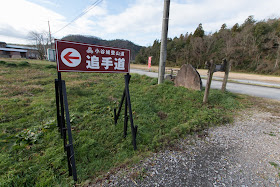



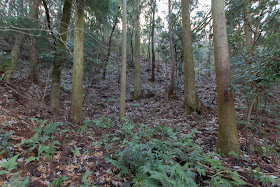





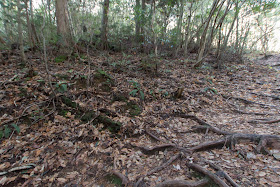




































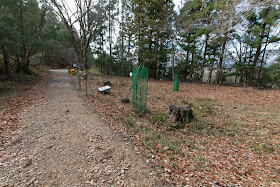

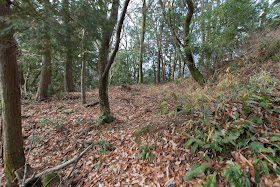















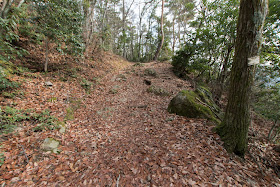


























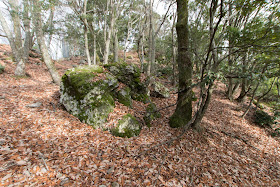










































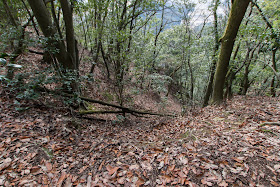








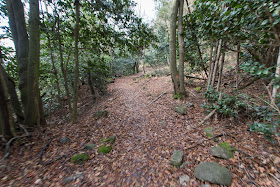







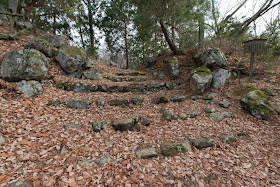

















































































































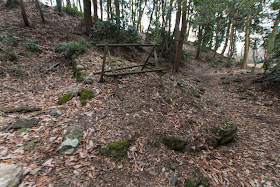




































































































































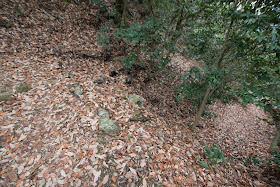
















































































No comments:
Post a Comment